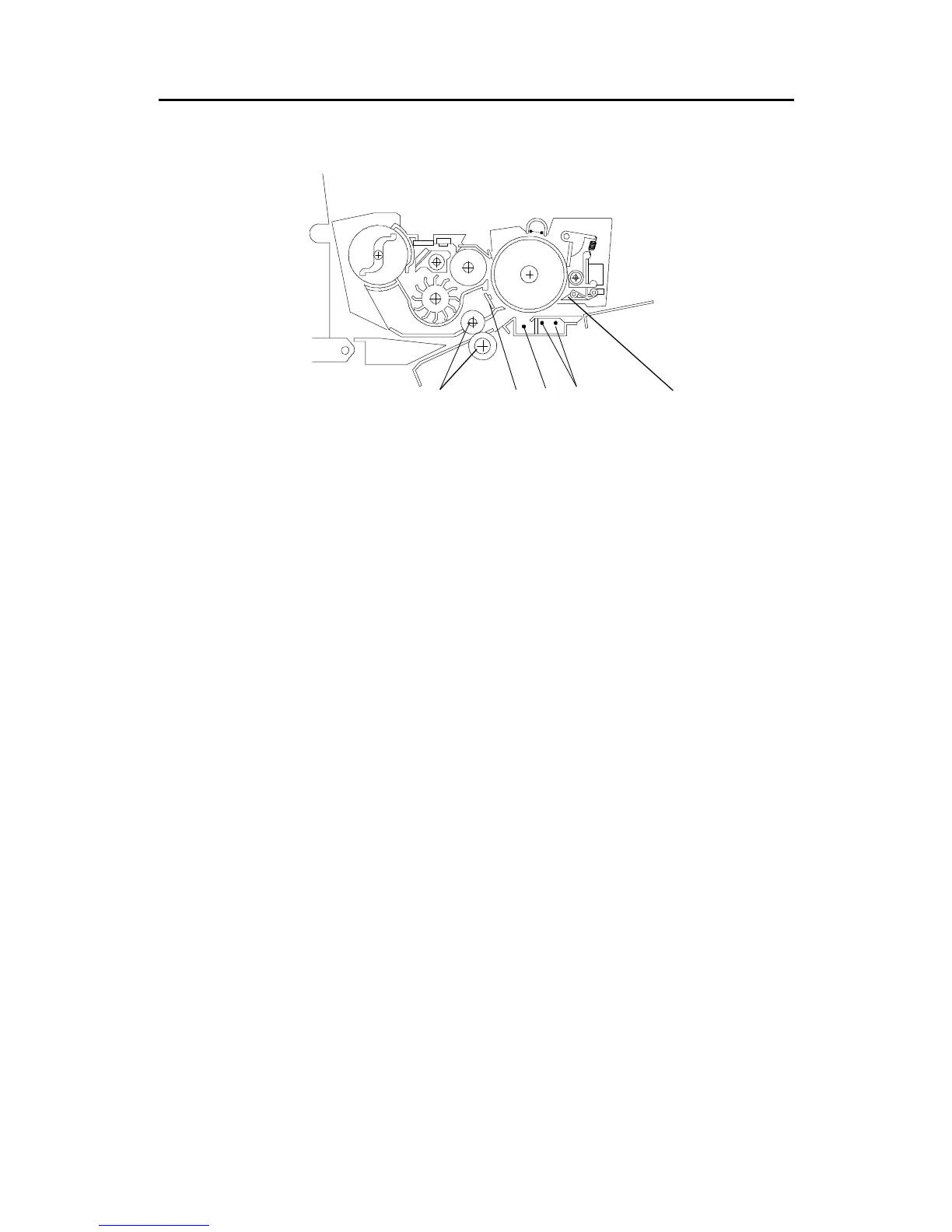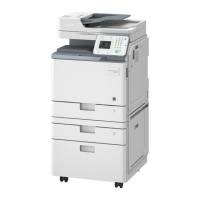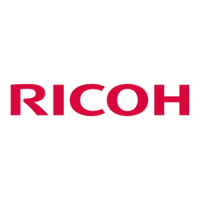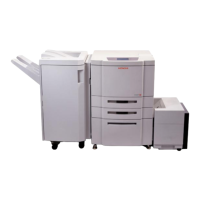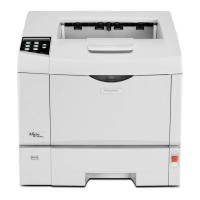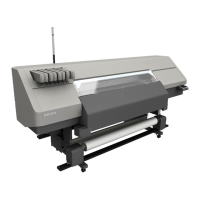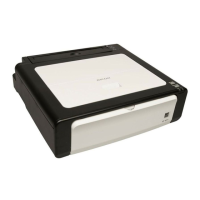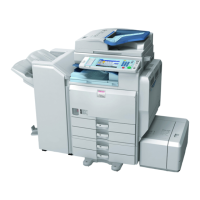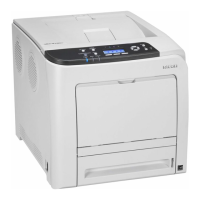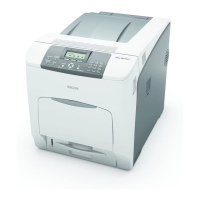5. IMAGE TRANSFER AND PAPER SEPARATION
5.1PRE-TRANSFER LAMP (PTL)
After the latent image is developed but before the image is transferred to the
copy paper, the drum surface is illuminated by the pre-transfer lamp [A]. This
illumination reduces the negative potential on the drum surface. This prevents
toner particles from being re-attracted to the negatively charged drum during the
paper separation process. It also makes image transfer and paper separation
easier.
5.2IMAGE TRANSFER
The registration rollers [B] feed the copy paper through the transfer entrance
guides to the transfer section. A high negative voltage (about --5.0 kV) is applied
to the transfer corona wire [C], and the corona wire generates negative ions.
These negative ions are applied to the copy paper, and the negative charge
attracts the positively charged toner away from the drum and onto the paper. In
addition, the paper is held against the drum by the positive counter charge on the
drum.
5.3PAPER SEPARATION
After image transfer, the copy must be separated from the drum. To break the
attraction between the paper and the drum, the separation corona wires [D] apply
an ac corona (5.0 kV) to the reverse side of the paper. The stiffness and weight
of the paper cause it to separate from the drum.
The separation corona has a negative component of approximately --250 volts. This
negative component holds the toner on the paper to prevent it from scattering the drum
during paper separation. The two pick-off pawls [E] ensure that thin paper, paper with
low stiffness, or upward curled paper separates completely from the drum.
Rev. 5/95
[B] [A]
[C]
[D]
[E]
A163 2-21 SM

